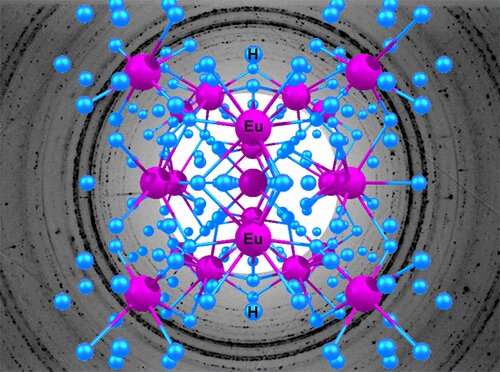Scientists discover a new complex europium hydride

A team of researchers from Russia, the United States and China led by Skoltech Professor Artem R. Oganov have discovered an unexpected very complex europium hydride, Eu8H46. The paper detailing the discovery has been published in the Journal of Physical Chemistry letters.
Superhydrides of rare-earth metals are interesting compounds that form under pressure: Some exhibit high-temperature superconductivity that scientists have been chasing for over 100 years, and some possess magnetic properties. Although devoid of superconductivity, europium hydrides are very interesting in view of chemical anomalies that make europium different from other rare earth atoms.
Armed with the efficient and reliable USPEX crystal structure prediction tool developed by Oganov and his students, the team predicted the structure of the remarkably complex compound Eu8H46, which helped explain the experimental data.
"I am pleasantly surprised that USPEX has easily predicted a highly complex structure of 54 atoms, which is quite a lot. Curiously enough, our colleagues obtained this hydride in experiment earlier but got the structure and composition wrong, assuming it was EuH5. Now we know that the compound is much trickier," Oganov comments.
"Such unusual compounds can be predicted in theory and proved by experiment, but there is no simple rule for identifying probable chemical compositions of stable compounds without performing arduous calculations," says Dmitrii Semenok, the first author of the paper and a Ph.D. student at Skoltech.
More information: Dmitrii V. Semenok et al. Novel Strongly Correlated Europium Superhydrides, The Journal of Physical Chemistry Letters (2020). DOI: 10.1021/acs.jpclett.0c03331
Journal information: Journal of Physical Chemistry Letters
Provided by Skolkovo Institute of Science and Technology





















